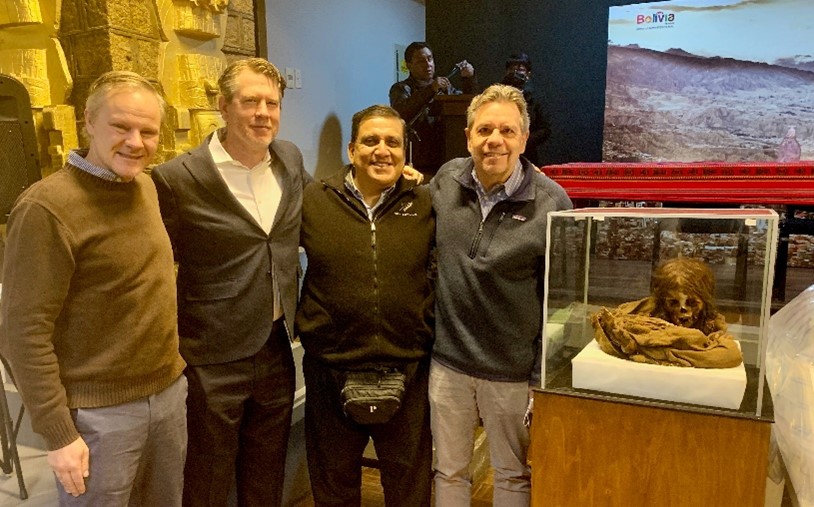Heart disease is a serious problem affecting modern civilizations. Obesity, diabetes, and lack of exercise are believed to be main contributors to this problem, but recent findings prove they are not the only indicators of heart disease. Surprisingly, a greater understanding of heart disease did not come from studying the living, but the dead.
For the last 10 years, Gregory Thomas, M.D., medical director, cardiovascular program development, MemorialCare, and his colleague, David Michalik, D.O., infectious disease specialist, MemorialCare Miller Children’s & Women’s Hospital Long Beach, have studied mummies to determine if heart disease was prevalent centuries ago in people with healthy lifestyles. Dr. Thomas and his team have traveled across the globe across Italy, Germany, Peru, and the Smithsonian to find evidence of atherosclerosis. Their latest expedition was high in the Andes mountains of La Paz, Bolivia.
cardiovascular program development, MemorialCare, and his colleague, David Michalik, D.O., infectious disease specialist, MemorialCare Miller Children’s & Women’s Hospital Long Beach, have studied mummies to determine if heart disease was prevalent centuries ago in people with healthy lifestyles. Dr. Thomas and his team have traveled across the globe across Italy, Germany, Peru, and the Smithsonian to find evidence of atherosclerosis. Their latest expedition was high in the Andes mountains of La Paz, Bolivia.
Our goal is to study those who lived in the past to learn more about the human condition. By learning about what caused heart disease in the past, we answer the questions we have about heart disease today.
David Michalik, D.O.
In Bolivia, their process included obtaining the historical records, genetics, tissue samples and radiological imaging of each mummy they studied.
“Our approach helps us create a story about the mummy we are studying,” said Dr. Thomas. “With this process, we are able to understand more about how they lived, and what they died from.”
The Bolivian expedition differed from other expeditions in the past due to the condition of the mummies themselves. These mummies were preserved naturally rather than being artificially mummified, like those of ancient Egypt.
“In the past, we have not been able to get a well-rounded set of samples since most of the organs were removed previously,” said Dr. Thomas. “The mummies in Bolivia provided us with many samples so we could have a better microbiological analysis of their bodies.”
On this expedition, Drs. Thomas and Michalik worked closely with other members of the HORUS research group, as well as the National Anthropology Museum of Bolivia and the Institute for Mummy Studies scientific team in Bolzano, Italy. The HORUS research group is a multidisciplinary team of physician-scientist cardiologists, radiologists, specialists, and archaeologists dedicated to the medical research of ancient remains.
“It really was a group effort at all levels” said Dr. Michalik. “Everyone on each of the teams as well as the local Bolivianos worked incredibly hard to make this trip a big success. There will be so much to analyze and discuss moving forward and we are very excited to see what secrets these ancient people share with us about the human condition as it pertains to heart health.”